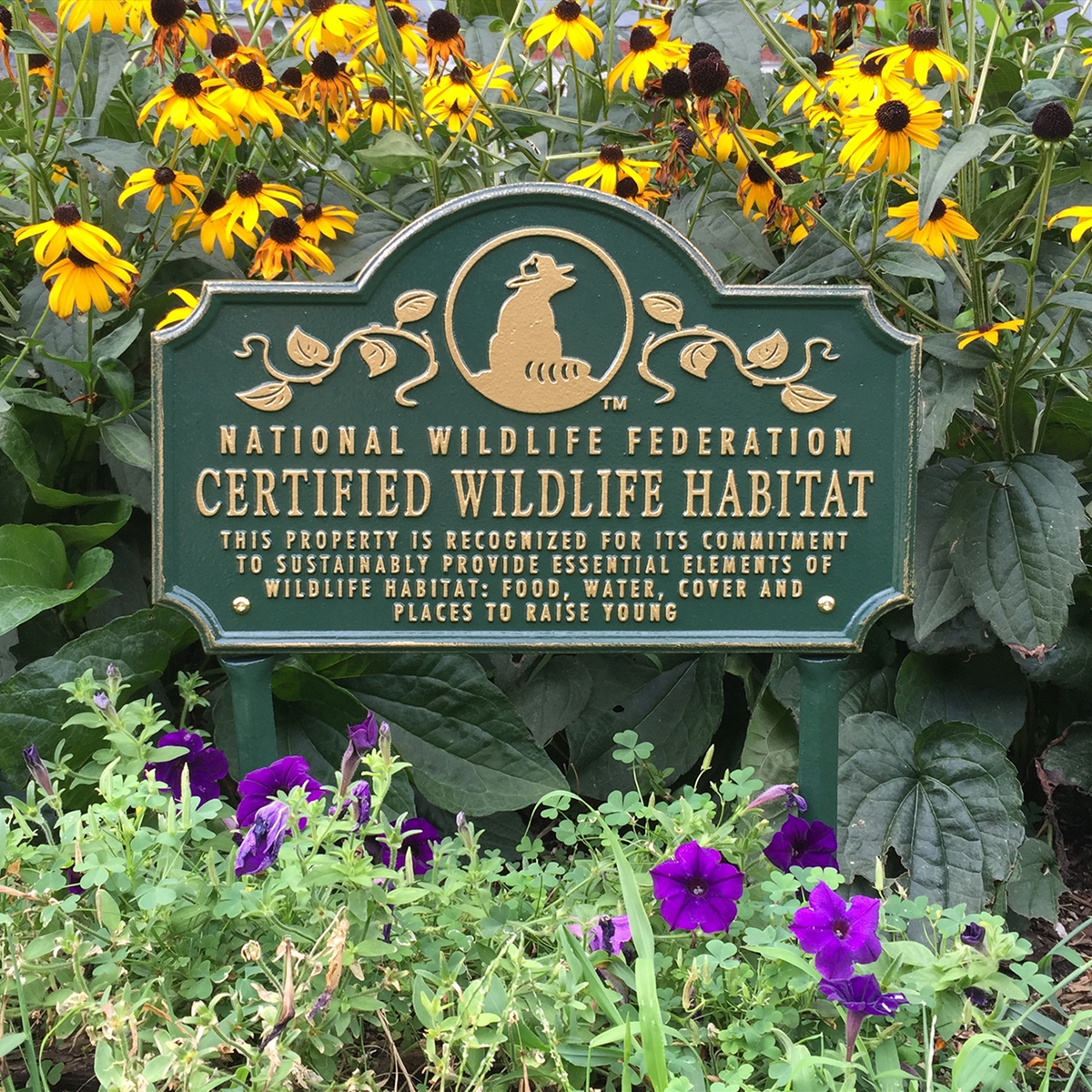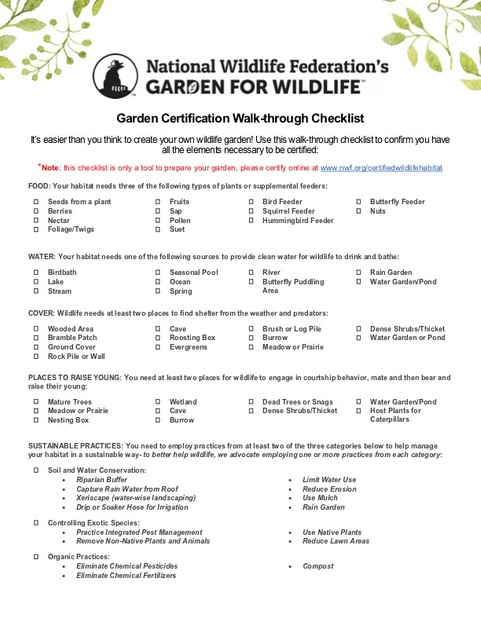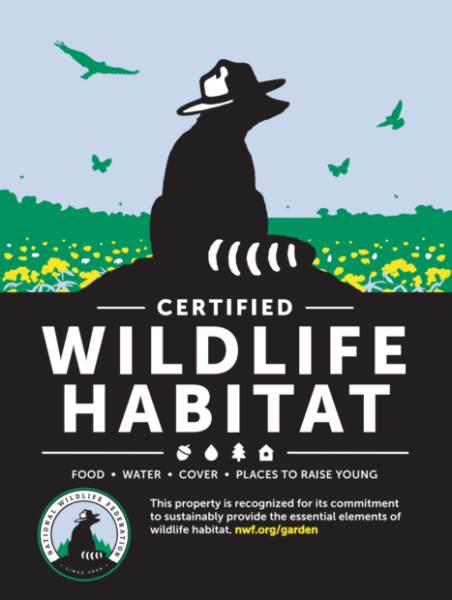When you think of a wildlife habitat, you may think of acres of untouched nature, where animals roam free without interference from humans. But did you know that you can create a natural haven for birds and other wildlife in your own backyard? The National Wildlife Federation offers a Certified Wildlife Habitat® program that certifies any green space that meets the criteria—be it a backyard, container garden, schoolyard, or work landscape—as a wildlife habitat. Why should you consider getting your space certified?
Why a Certified Wildlife Habitat?

Having a certified wildlife habitat has many benefits—both for the environment and for you. For one, it provides a replenishing space where birds, butterflies, bees, and other wildlife can find what they need to survive—and to thrive. Supporting local wildlife in this way may seem like an insignificant step, but it’s all part of a larger whole in protecting our nature resources. At a time where there’s a 30% decrease in the North American bird population since 1970, and where animals are increasingly losing their natural habitats to the rapid development of land, wildlife needs our help now more than ever.
5 Easy Steps to Certifying Your Green Space
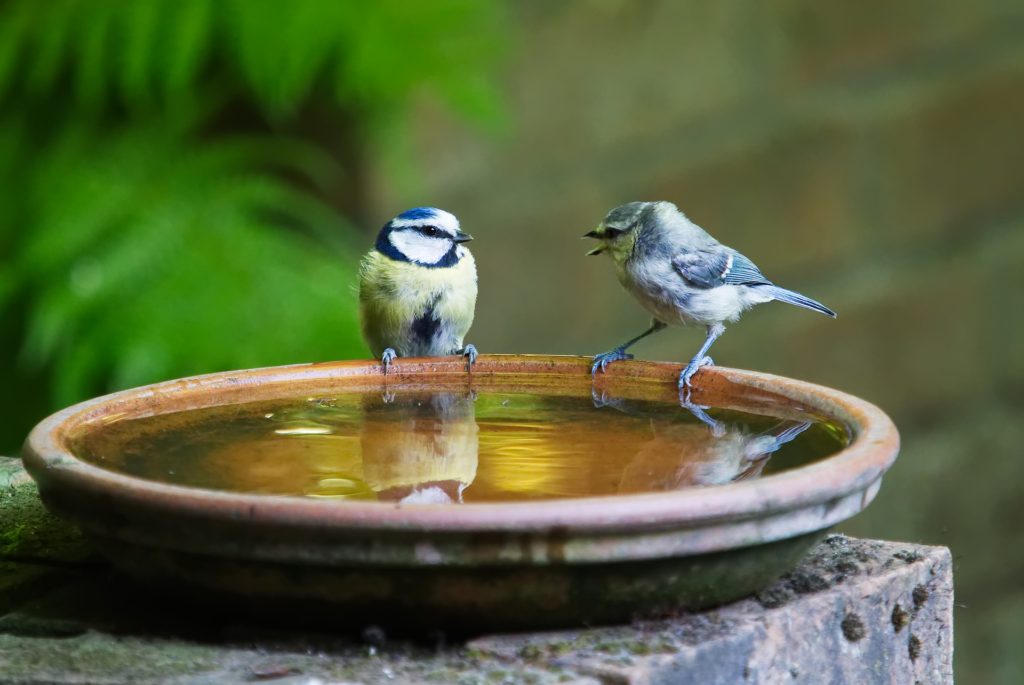
According to the National Wildlife Federation, you need all of the following to meet the requirements for a certified wildlife habitat:
- Food. Provide at least three food sources for visiting wildlife like birds, butterflies, and squirrels. These sources can include* berries, nuts, twigs, pollen, and fruits from native plants or bird feeders.
- Water. Clean water must be available for drinking and bathing. At least one clean water source must be offered, and can include* a birdbath, pond, spring, or stream.
- Cover. Your green space also needs to include* at least two places for wildlife to shelter,like shrubs and thickets. Manmade shelters like birdhouses, log piles, and roosting boxes are also acceptable.
- Places for wildlife to raise young. Your habitat must have at least two places for wildlife to mate, and bear and raise their young. These can include mature trees, meadows or prairies, dead trees, dense shrubs, or a water garden.
- Sustainable gardening practices. Maintaining a sustainable, environment-friendly landscape is also key. To certify your habitat, you need to employ at least two of the NWF’s approved gardening practices for sustainability, which include* using native plants, reducing lawn areas, composting, and capturing rain water from the roof.
*For a complete checklist of what you can include in your habitat in order to qualify for certification, see the National Wildlife Federation’s Garden Certification Walk-through Checklist:
Once you have all of these in place, the last step is to apply for certification on the National Wildlife Federation website. There is a $20 application fee.
The Benefits of Certification
Having a designated Certified Wildlife Habitat through the NWF offers many benefits. It allows you the satisfaction of knowing that you are providing a safe haven for local wildlife, helping to restore the environment’s natural balance, and enjoying a space where you and your family can observe and learn more about nature. But aside from these, it also has some material benefits, including:
- A personalized certificate
- A one-year membership to the National Wildlife Federation
- A subscription to National Wildlife® magazine
- A subscription to the monthly Garden for Wildlife e-newsletter
- 10% off the National Wildlife Federation merchandise
- Exclusive option to purchase a Certified Wildlife Habitat® garden sign
More Conservation Organizations
Here are a few organizations that help homeowners, communities, corporations, and other entities conserve land and create safe, sustainable habitats where wildlife can flourish:
Wildlife Habitat Council
The Wildlife Habitat Council’s Conservation Certification® program recognizes companies’ meaningful habitat management efforts and supports conservation education programs in the community.
The Nature Conservancy
The Nature Conservancy works with communities, businesses, cooperatives, and landowners to establish local conservation groups.
U.S. Forest Service
The U.S. Forest Service offers a list of landowner assistance programs where individual or community landowners can go to get resources and tools for caring for a forest (defined as an acre or more of land with at least 10% of it covered in trees).
Other Ways to Get Involved
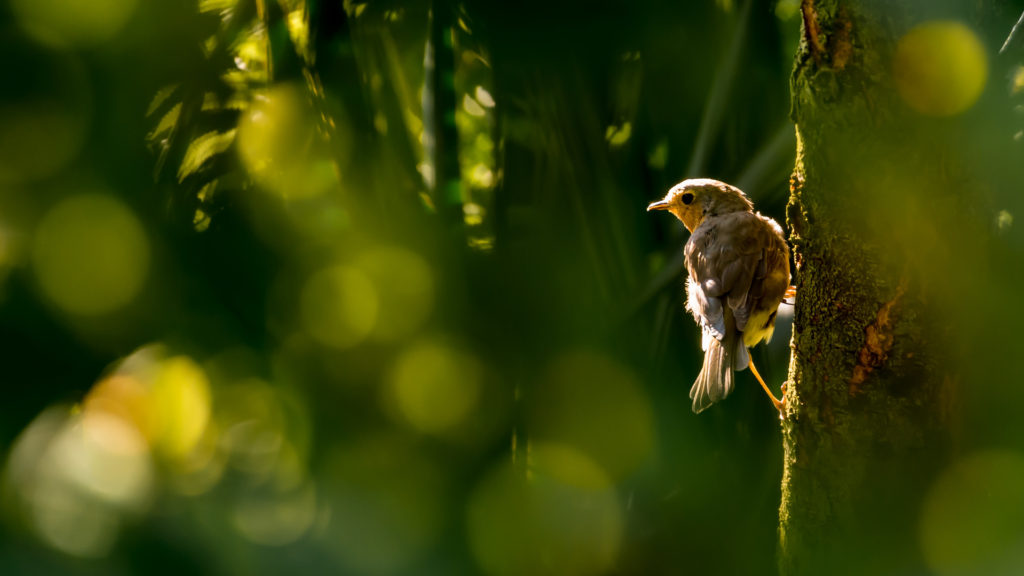
If getting your land habitat-certified is too daunting a task, take heart! There are things you can do on a smaller scale to help local wildlife—and the environment as a whole. Here are some resources to get you started:
- 3 Ways to Help Birds During Nesting Season
- Winter is for the Birds: The Importance of Winter Wild Bird Feeding
- Love Squirrels? Here’s How to Support Them
- Native Plants for Birds
- Wild Bird Clubs
- Wild Bird Checklist for the Big Bear Area
- Birding Festivals in 2020
Visit Us at Chirp!
If you are local to the Big Bear Lake area, or are planning a visit, stop by the Chirp Nature Center to hear a free bird talk by a special guest speaker, enjoy crafts and games for you and the family, or another one of our upcoming activities. For more details, contact us today!

